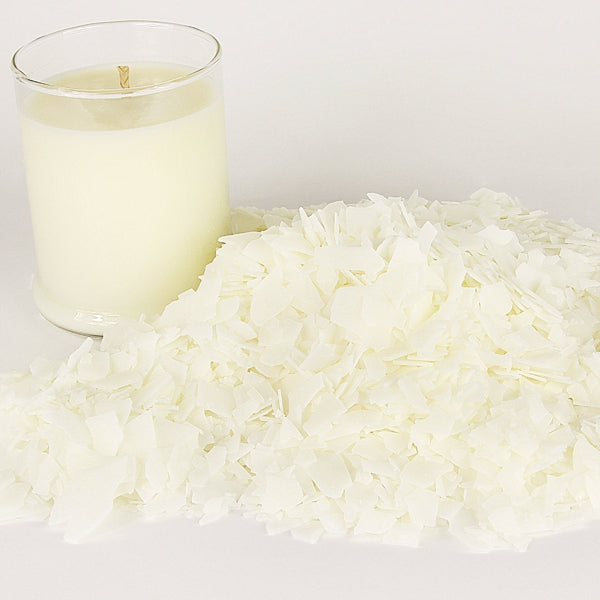Transform Your Home with Eco-Friendly Soy Candles and Home Fragrance
Transform Your Home with Eco-Friendly Soy Candles and Home Fragrance
Blog Article
From Wick to Wax: Comprehending the Chemistry Behind Soy Wax Candles and Their Ecological Effect
As we illuminate our spaces with the cozy radiance of candles, there exists a world of detailed chemistry behind the apparently simple act of lighting a soy wax candle. The choice in between soy and paraffin wax prolongs beyond simple appearances, delving into the world of environmental influence and the extremely make-up of the materials. Recognizing the molecular structure of soy wax and its burning procedure drops light on the emissions released into our surroundings. Join us as we untangle the scientific details behind soy wax candles and explore their effects on our setting.
Soy Wax Vs. Paraffin Wax
When contrasting soy wax and paraffin wax for candle light production, it is necessary to recognize the distinct attributes and advantages of each product. Soy wax is an all-natural, eco-friendly resource originated from soybean oil, making it environmentally friendly and naturally degradable - home fragrance. In comparison, paraffin wax is a by-product of oil refining, which increases issues regarding its ecological effect and sustainability
Soy wax candles melt cleaner and emit less soot contrasted to paraffin wax candle lights, making them a much healthier selection for interior air top quality. In addition, soy wax has a reduced melting point, permitting a longer-lasting candle that disperses fragrance extra properly. Paraffin wax, on the various other hand, often tends to burn faster and less easily, possibly launching dangerous chemicals right into the air.
From a sustainability viewpoint, soy wax is preferred for its biodegradability and sustainable sourcing, aligning with the growing customer preference for environmentally aware items. While paraffin wax has actually been a standard option in candle making as a result of its price and simplicity of use, the shift in the direction of green options like soy wax is acquiring momentum in the industry.
Chemical Composition of Soy Wax

Burning Process in Soy Candles
The chemical composition of soy wax straight influences the combustion procedure in soy candles, affecting factors such as burn time, aroma launch, and environmental impact. When a soy candle light is lit, the warm from the flame melts the wax near the wick. This fluid wax is then created the wick due to capillary activity. As the liquid wax gets to the fire, it undertakes and vaporizes burning. The burning procedure involves the vaporized hydrocarbons in the wax responding with oxygen in the air to produce warmth, light, water vapor, and co2.
The burning effectiveness of soy candles is affected by the pureness of the soy wax and the high quality of the wick. A clean-burning soy candle with an effectively sized wick will generate a stable fire and minimize soot formation. This not only expands the burn time of the candle light yet likewise enhances the release of fragrances. Furthermore, soy wax candle lights have a reduced environmental effect contrasted to paraffin candles as a result of their renewable and biodegradable nature.

Environmental Advantages of Soy Wax

Taken into consideration a sustainable choice to traditional paraffin wax, soy wax uses notable ecological advantages that make it a popular choice amongst eco-conscious customers. Soy wax burns cleaner and produces much less soot than paraffin wax, contributing to far better indoor air quality and minimizing the need for cleaning and upkeep. On the whole, the environmental benefits of see here soy wax line up with the expanding demand for lasting and eco-friendly products in the market.
Recycling and Disposal Factors To Consider
Reusing and correct disposal of soy wax candle lights play a vital duty in maintaining environmental sustainability and decreasing waste in neighborhoods and houses. When it comes to reusing soy wax candles, the first step is to ensure that the candle has shed entirely.

In terms of disposal, if recycling is not a choice, soy wax candles are naturally degradable and can be safely thrown away in many household waste systems. It is always advised to inspect with local reusing centers or waste management solutions for particular standards on candle disposal to guarantee appropriate handling and This Site ecological security.
Conclusion
In verdict, the chemistry behind soy wax candles exposes their ecological benefits over paraffin wax candles. Soy wax, obtained from soybean oil, burns cleaner and generates much less soot when contrasted to paraffin wax.
When comparing soy wax and paraffin wax for candle light production, it is important to comprehend the distinctive features and advantages of each material (crystal soy candles).Soy wax candle lights melt cleaner and give off much less residue contrasted to paraffin wax candle lights, making them a much healthier choice for indoor air high quality.Taken into consideration a lasting alternative to traditional paraffin wax, soy wax provides significant ecological advantages that make it a preferred selection amongst eco-conscious customers. Soy wax burns cleaner and produces much less residue than paraffin wax, adding to better indoor air quality and decreasing the requirement for cleaning and maintenance.In final thought, the chemistry behind soy wax candle lights exposes their environmental advantages over paraffin wax candle lights
Report this page